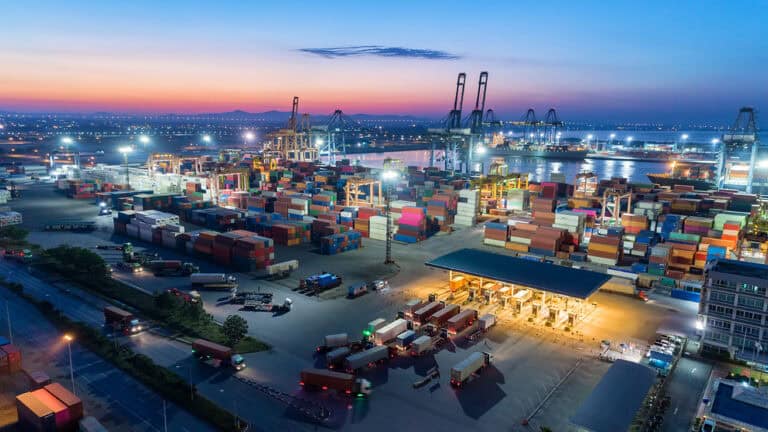
Supply chain traceability has long been a niche need for companies that wanted extra quality control measures, sought to avoid import tariffs, or wanted to qualify their imports for preferential trade status. These are still important considerations, but traceability in the supply chain is gaining momentum to address other risks. A spate of new legislation—proposed and enacted—across the world calls for increased transparency in supply chains. New rules in the U.S. would significantly raise these transparency expectations, and actions in the EU are poised to expand them further.
UFLPA: Unique new challenges for all industries
The Uyghur Forced Labor Prevention Act (UFLPA) was enacted in the U.S. in late 2021 but didn’t garner significant attention until June 2022. That’s when U.S. Customs and Border Protection (CBP) released guidance on how they would be enforcing the new law.
Many companies were surprised and unprepared. That’s because, in the past, the burden of proof rested on CBP to demonstrate that a shipment was connected to forced labor. If a company’s goods were detained, they had 90 days to demonstrate that they had taken “reasonable care” in preventing forced labor, and their goods were released. The UFLPA upended all of that. It essentially tells CBP to presume that any shipment connected to the Xinjiang region of China is produced through forced labor. Companies can rebut this presumption, but the burden of proof has shifted to companies to demonstrate, not that they were reasonably careful, but that their shipment in fact has no connection to forced labor.
How much of a connection counts? Well, any at all. A single thread that contains a dye that was made in Xinjiang. A shipment that was transported through Xinjiang. A product made entirely in a different country but using inputs that are likely to have come from Xinjiang. If your goods are detained, the timeline to produce documentation and for CBP to review and decide has dropped to 30 days. If you can’t produce the needed documentation within that time, you forfeit the goods and absorb whatever costs you have wrapped up in them. Even if you ultimately prove there was no forced labor connection, a report is submitted to Congress explaining how the case was decided. For many companies, the reputational risk of this publicity may prove more significant than merely forfeiting the goods.
This spells a potential sea-change for supply chains for a few reasons. Xinjiang is a significant source of raw materials across various industries, including agriculture, apparel, technology, automotive, industrial, and consumer goods. The raw materials are shipped all over the world and used as inputs for components and finished goods. Therefore, you can’t even assume your shipment is free of risk just because it was manufactured far from China.
Mapping—a cornerstone to supply chain traceability
So, how do you get this level of traceability? The first step is to map your supply chain. This is actually an explicit requirement for the UFLPA and several other recent ESG-related regulations. Supply chain mapping goes beyond creating a list of all your multi-tier partners. It means locating them geospatially, highlighting key information about them, and revealing their role in your supply chain and the relationships between them.
There’s no “easy button” for mapping, despite various claims by vendors that their artificial intelligence can automatically tell you who your multi-tier suppliers are and map them for you. The reality is that identifying those suppliers does take effort. However, once done, capabilities such as those offered by e2open can help you create a relational map that contains baseline data about each supplier and their role in your sourcing and production process.
This is where the right approach to mapping is crucial and where the “easy button” approach can hurt you later on. For compliance with laws like the UFLPA, what’s needed is to show the supply chain for a specific shipment, not just a generic map of all the suppliers connected to your production processes in the past. It’s important to build your compliance strategy on mapping capabilities that can reveal the full supply chain for individual shipments.
Supplier-specific data and ongoing communication
It’s not enough to know that a supplier exists and where they are located. To comply with traceability-intensive laws like the UFLPA, you must get additional data about each supplier you work with. This is because traceability in these cases aims to confirm that each supplier takes specific actions, such as paying workers and maintaining a human rights policy. In other cases, companies may want to (and soon may be required to) also gather information about that supplier’s carbon footprint, water use, waste, and other factors. New environmental, social, and governance (ESG) rules have been proposed and adopted across the world to achieve just that, so it makes sense to take an approach you can build on over time instead of one that can’t grow with you in response to new needs.
To get this data, it’s helpful to use robust supplier onboarding, solicitation, and collaboration capabilities such as those offered by e2open. These capabilities are important beyond the initial mapping because companies must routinely update supplier information and communicate expectations to suppliers that don’t meet KPIs.
As an example of the value of mapping linked to collaboration, if an automotive manufacturer has a limited number of suppliers that can produce a certain part, ensuring that the part can be imported for final assembly of the vehicle is crucial. Being able to easily check that the supplier has everything in place to meet UFLPA requirements and communicating any gaps goes a long way toward ensuring supply continuity.
Another interesting example is of diversification of the supply base. Many companies are working to establish new supply chains, such as by moving production locations closer to destination markets. This raises the prospect of a host of new suppliers with whom you don’t have long, established business relationships or a proven track record. To contain the risks of building your business strategy atop an unvetted new supply base, it’s imperative to assess how all those new suppliers conduct business, where they source from, and what their standards are. When you can do this efficiently—especially when this supplier management system is linked to the other processes in your supply chain—you reduce the risks and timeframe to build the new supply network upon which your strategy depends.
Documentation of source and production flows for everything at every level
The heart of traceability is to keep track of where things came from, what is done to them, who does it, and where they send it next. This is roughly what CBP envisions to satisfy the UFLPA requirements. In light of this, it is even more vital for the initial supply chain map and subsequent information gathering to be linked to transactional data such as purchase orders and records regarding sourcing, manufacturing process, inventory movements, transportation, payment, and storage. This level of traceability is needed for every unit in your shipment. This is to counteract scenarios where tainted materials are co-mingled with untainted ones, and the resulting units are sent in the same shipment for import. Again, the importance of an end-to-end approach is clear, and the deficiencies of the “easy button” approach are equally clear.
Cross-checking all parties against government lists of bad actors
As an extra aspect of due diligence, authorities maintain lists of entities specifically flagged for compliance or corruption concerns, such as the U.S. government’s list of entities connected to Xinjiang forced labor concerns. The onus is on importers to demonstrate none of the parties connected to their shipment is on any applicable list. Performing these checks manually for every detail of every shipment is not only cost -and time-prohibitive but lacks a clear methodology for documenting what was checked, leaving you exposed to risk if you can’t produce the screening records. This is another area where due diligence capabilities like those offered by e2open can help by automating these deep screenings for every transaction, alerting you to any red flags, and maintaining records in the system that you can produce if the authorities ask you.
Traceability regulations going global
In September 2022, the EU introduced its proposal to root out abuses in supply chains by banning the import or sale of any product connected to forced labor anywhere in the world. The proposal applies to all industries. It implies any company that wants to access EU markets must be prepared with end-to-end traceability for individual units in specific shipments.
Similarly, proposals by the U.S. Securities and Exchange Commission and the State of New York call for companies to report certain data—such as greenhouse gas emissions and climate change risks—from their extended supply chains. Environmental disclosure rules in the EU are even more robust. Some of these regulations specifically refer to traceability or mapping, and some merely imply it. With the rising urgency of climate change bringing more scrutiny to supply chains, where most impacts originate, transparency and mitigation expectations will likely grow more robust. This underscores the importance of carefully weighing your approach to a connected supply chain and creating scalable, repeatable processes to manage the risks.
Takeaways for business: multi-enterprise solution key to multi-enterprise challenge
The takeaway for business leaders is that if you want access to the biggest markets in the world, you must be prepared to know and document where every stitch of your products comes from, every process is done to produce and transport them, and who was involved in each step. This is fundamentally a multi-enterprise challenge—a challenge arising from a lack of connectedness between all participants in a supply chain. It is interesting to note this same underlying lack of connectedness is linked to the disruptions that have characterized supply chains for the past few years.
There is a rising understanding among business leaders that companies no longer compete just on the merits of their products or the power of their brand but on the strengths of their supply chains. In addition to compliance with regulations, there are many ways in which connecting your end-to-end supply chain on a multi-enterprise business network, such as e2open’s, can help mitigate risks and enable positive outcomes.
Think of it like this. If you’re planning a cross-country drive with 24 legs, you wouldn’t choose a vehicle that could only complete the first leg simply because it’s an easy choice and all that’s needed for today. In fact, this strategy would be extraordinarily inefficient and risky. Instead, you’d choose a vehicle that could go with you and adapt to the changing terrain all the way to your destination. That is the key for business as well, and traceability requirements are only the most recent developments that bring this principle into focus.
If you’re interested in hearing more about traceability, multi-tier connectivity, compliance with the UFLPA, or supplier management, contact us. We’d love to explore ways to work together to address your challenges.







